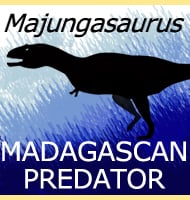Xenotarsosaurus
In Depth Based upon fossil remains first discovered in 1980, Xenotarsosaurus was named because of the complete fusion between the astragalus and calcaneum bones of the ankle, something that is quite unusual for a theropod dinosaur. At the time of the original description, the rear leg of Xenotarsosaurus was shown to share some similarities with … Read more
